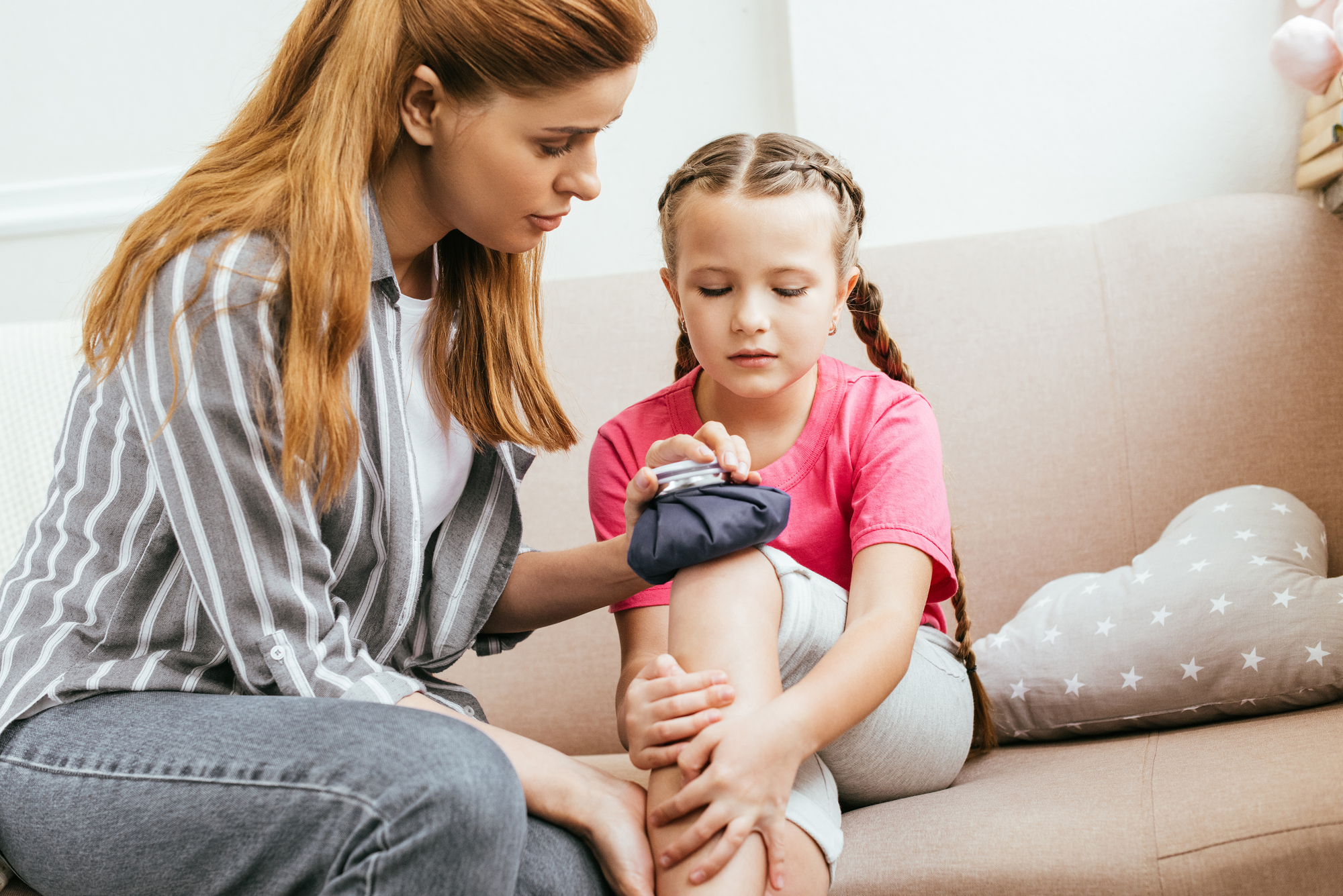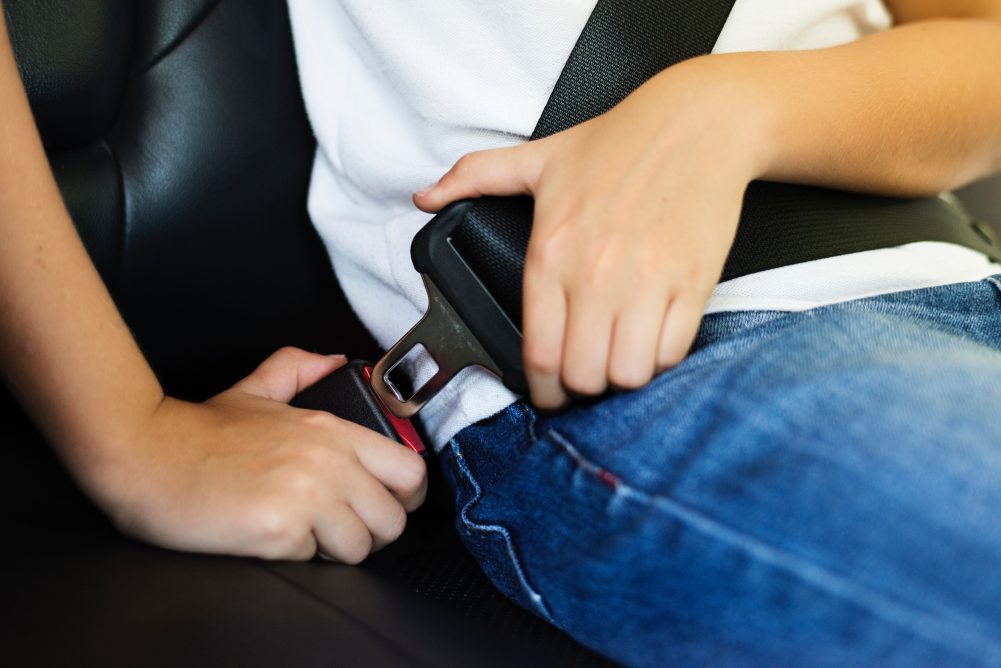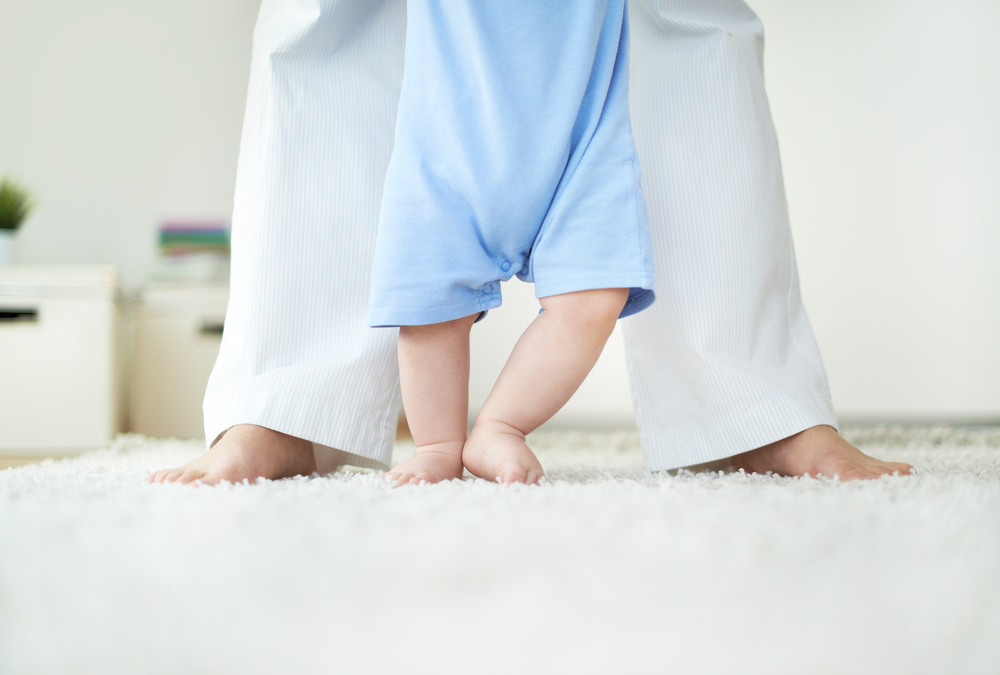Overuse and single trauma injuries are 2 of the most common causes of knee pain in children. But they also happen very differently.
Overuse, as the name suggests, happens when your kid uses his/her knees too much. On the other hand, single trauma injuries happen because of one accident.
I talk about them in better detail below and discuss how you, as a parent, can help your child recover from these injuries.
Overuse knee injuries in children
Findings from a 2016 research suggest that overuse is by far the most common cause of knee injuries in children. And, consequently, the most likely culprit for your child’s knee pain.
Your child may also be at a higher risk for overuse injuries if he/she has a history of knee injury and plays physically demanding sports like soccer, basketball, and gymnastics. Furthermore, the risk also gets higher the more times your child joins these activities.
The 2 most common overuse injuries that your child’s knee could experience include Osgood Schlatter’s disease and patellofemoral pain syndrome.
Osgood Schlatter’s disease
Osgood Schlatter’s disease happens when the bony prominence right under your child’s kneecap (i.e. the tibial tubercle) is inflamed.
It often happens around the same time as growth spurts and is especially common in children and adolescents who participate in physical ports. This is because the quadriceps muscle, the same muscle that straightens the knee when running and jumping, repeatedly pulls at the tibial tubercle, eventually irritating it to the point of swelling.
Treating Osgood Schlatter’s disease in children:
As with other overuse injuries, the most important part of treatment is rest.
Other things you can do include:
- Applying cool or warmth to your child’s knee. Apply warmth for 15 minutes before physical activity; Use cold for 15 minutes after the activity if knee pain is present.
- Knee straps. This applies pressure directly on the quadriceps’ tendon which, in turn, relieves pressure on the tibial tubercle. This will be useful during sports and activity.
- Gradual stretching and strengthening exercises. A proper trainer or physical therapist should be helpful but you can promote this by simply making sure that your child doesn’t do too much in one go and gets the proper rest that he/she needs.
Patellofemoral pain syndrome (PFPS)
Also described as anterior knee pain, there’s research showing that about 6-7% of the entire adolescent population have PFPS and 2/3 of them are heavily engaged in sports. Girls tend to be at a higher risk, too.
Now, there are many different causes of PFPS. Overuse, overload, muscle imbalances, and biomechanical problems are the most likely culprits. But, more often than not, it’s a combination of 2 or more of those said causes that lead to anterior knee pain in children.
Treating PFPS:
The best way to treat patellofemoral pain syndrome is to figure out exactly why it happened in the first place. Your doctor and/or physical therapist will require a detailed history of your son/daughter to figure this out and recommend the appropriate steps.
As a parent, though, here’s what I recommend you do:
- Take it easy. An overloaded and overused knee joint can easily find relief from pain when properly rested. Allow your child to take a break from activity.
- Get a knee support. The compression from knee supports lead to better blood flow and reduced swelling and pain. If your child has patellar tracking issues that contributed to his/her PFPS, choose a knee brace with an open patella design or one that has kneecap gel pads.
- Get your kid the right footwear. Imbalances and biomechanical issues on your children’s feet can have a negative effect on their knees. If he/she has flat feet, ask your doctor about orthotics. If they’re into sports, get them the right shoes.
- Encourage stretching and strengthening. PFPS can also be caused by tight hamstrings, tight calves, and weak quads. Gradual stretching and strengthening should help fix the issue, if not prevent it.
- Diversify his/her activities. Engaging in only 1 sport or activity may lead to very specific muscle imbalances that can eventually lead to PFPS. Variety is key for growing children.
Traumatic knee injuries in children
These are the types of knee injuries where you or your child can pinpoint when (and perhaps how) the injury happened. This may be as simple as tripping and falling on their knees to more complicated and unfortunate modes of injury while playing sports.
Either way, there will have been damaged structures that cause knee pain.
Here are a few common examples.
Ligament injuries (sprains)
Your child’s knees will have 4 ligaments: the ACL, PCL, LCL, and MCL. Each of these ligaments prevent excessive movement on the joint which, in turn, adds stability.
Of these ligaments, ACL injuries are the most common, especially over the last few years. As a matter of fact, research shows that the incidence rate of ACL sprains in children and adolescents have jumped nearly 150% since 2005.
An ACL injury can happen when your child suddenly twists his body with his/her foot planted on the ground. There will be knee pain and swelling immediately after the injury, and possibly a “pop” at the exact moment it happened.
Treating your child’s knee sprain:
- This has to be priority #1. Playing on an unhealed sprain can cause chronic knee instability and possibly add more damage to the knee’s other structures.
- Ice and compression. This is the immediate medical care you should give when you suspect that your child has a knee sprain. The ice and compression helps manage the inflammation which, in turn, also helps with pain.
- Physical therapy. This is the most effective way to make sure your son/daughter fully recovers from his/her injury.
- This is reserved for the more serious knee injury, like when there are other ligaments and menisci involved. Note that physical therapy is still needed after surgery.
Meniscus tears
Like ACL injuries, meniscus tears can happen when your child pivots on his knees. This similarity also means a high probability of both injuries happening at the same time.
Pain and swelling should be expected. Your child might also feel a “catching” sensation when he/she bends or straightens his/her knee.
Treating your child’s meniscus tear:
As a parent, treating your kid’s torn meniscus is highly similar to treating ACL sprains.
Rest is most crucial, ice and compression help with immediate pain and inflammation, physical therapy is a must, and surgery may or may not be needed depending on your child’s case and the severity of the injury.
Other common causes for your child’s knee pain
- Sinding-Larsen-Johansson (SLJ) syndrome. This is an overuse injury that presents in much the same way as Osgood Schlatter’s disease. It generally heals on its own when your child reaches full maturity.
- Kneecap dislocation. This happens when your child’s knee is suddenly twisted or if there’s a direct blow to his/her patella. The kneecap generally pops back into place but a history of dislocation also increases the likelihood of another one. Frequent check ups are recommend.
- Juvenile idiopathic arthritis (JIA). The most common type of arthritis in children, JIA is an autoimmune disease. It can last for months to possibly years but many children go into remission without any permanent damage.
In a nutshell
Children are at a risk for knee pain because their bones and soft tissues have yet to fully develop. What may be a simple trip and fall to us adults may be an injury to them.
Yet, children are not so fragile that they need to be boxed in. In fact, sports and exercise is still highly recommended for kids. From a physical standpoint, it promotes a long-term adherence to an active lifestyle. Play also encourages social skills and creativity among other things.
So, when your kids are out and about, just make sure they get enough rest and variety to avoid overuse injuries. In case an accident happens when they’re playing, rest, ice, and compression are your go-to moves whereas physical therapy and surgery (only when necessary) offer long-term solutions.
Kris Ceniza is a physical therapist and fitness coach who works with Knee Force. He’s also the website’s manager and content editor, so he’s in charge of making sure that their content is accurate and up to date.
Kris believes in the power of scientific evidence and puts that into practice through his writing, training, and treatment strategies.
He holds a Bachelor’s degree in Physical Therapy from Cebu Doctor’s University in the Philippines.
Website link: https://kneeforce.com/








